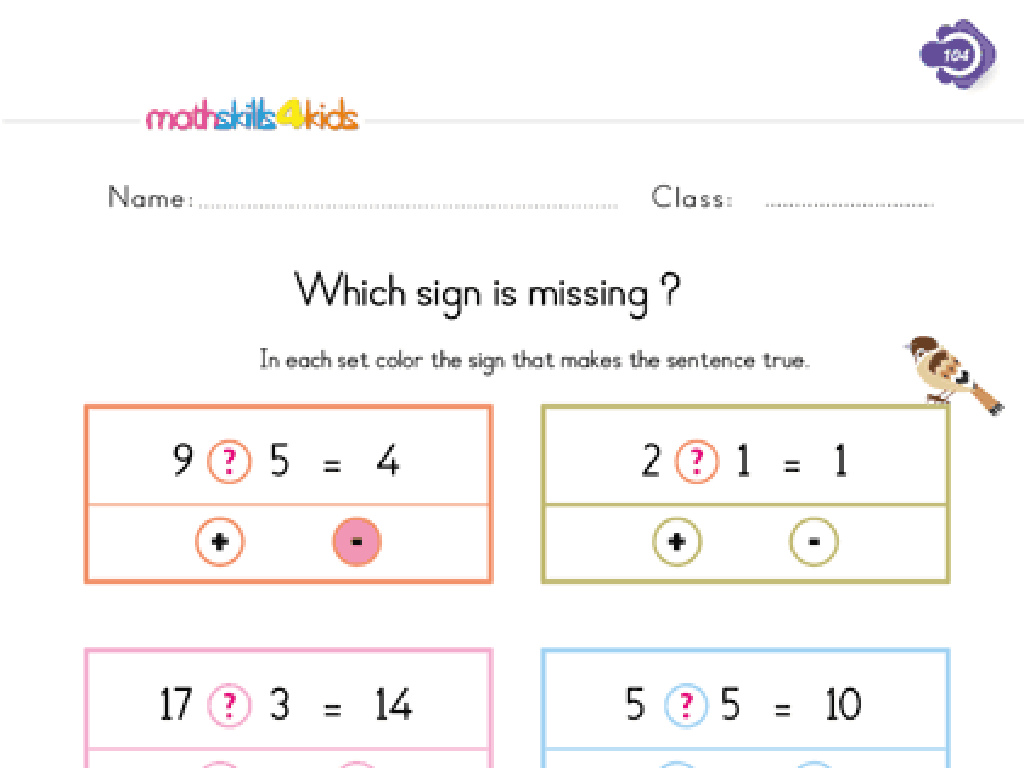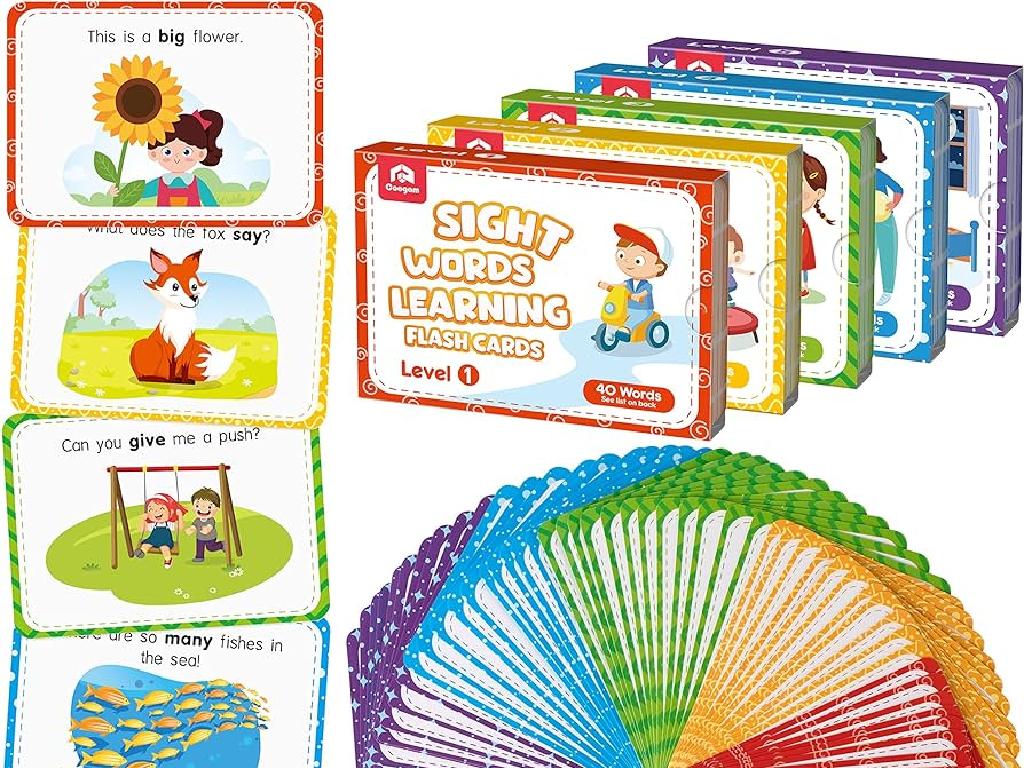Solve One-Step Inequalities
Subject: Math
Grade: Eighth grade
Topic: One-Variable Inequalities
Please LOG IN to download the presentation. Access is available to registered users only.
View More Content
Introduction to One-Step Inequalities
– Understanding inequalities
– An inequality shows the relationship between two values that are not equal.
– Inequalities vs. equations
– Equations show equality, while inequalities show greater than, less than.
– Real-life inequality examples
– Budgeting allowance, or minimum height for a ride.
– Solving one-step inequalities
– Use similar methods as equations but remember to flip the sign when multiplying or dividing by a negative.
|
This slide introduces the concept of one-step inequalities, which are fundamental in understanding how to solve problems where there is a range of possible solutions rather than one exact answer. Inequalities are like equations, but instead of an equal sign, they use symbols to indicate ‘less than’, ‘greater than’, etc. Real-life examples, such as budgeting an allowance or requirements like minimum heights for rides, can help students relate to the concept. When solving one-step inequalities, the process is similar to solving equations; however, students must remember to reverse the inequality sign when multiplying or dividing by a negative number. Encourage students to practice with examples and to check their solutions by substituting values back into the original inequality.
Understanding Inequality Symbols
– Greater Than (>) and Less Than (‘ means one value is larger than another, while ‘<' means it's smaller.
– 'At least' with Greater Than or Equal To (e)
– 'e' is used when a value is equal to or larger than another.
– 'No more than' with Less Than or Equal To (d)
– 'd' indicates a value is equal to or less than another.
– Not Equal To (`) in inequalities
– '`' shows that two values are not the same, and there's an inequality.
|
This slide introduces students to the fundamental symbols used in one-step inequalities and their meanings. Understanding these symbols is crucial for solving inequalities. The symbols ‘>’ and ‘<' are used to represent 'greater than' and 'less than,' respectively, and are the basis for comparing two values. The symbols 'e' and 'd' include the possibility of equality, which is essential when the condition 'at least' or 'no more than' is part of the problem. The '`' symbol is significant as it represents situations where two values are explicitly not equal to each other. Encourage students to think of these symbols as a balance scale where each side holds a value, and the goal is to determine the relationship between these values. Provide examples to illustrate each symbol's use, and prepare exercises where students can apply these concepts.
Solving One-Step Inequalities
– Goal: Isolate the variable
– Use addition or subtraction
– If the variable is subtracted, add to both sides; if added, subtract from both sides.
– Example: x – 3 > 2
– To isolate x, add 3 to both sides of the inequality: x > 5
– Solve and graph the solution
– Once solved, represent the solution x > 5 on a number line.
|
The objective of solving one-step inequalities is to get the variable by itself on one side of the inequality sign. This is done by performing the inverse operation to both sides of the inequality. If the variable is being subtracted by a number, we add that number to both sides; if it’s being added, we subtract it from both sides. For example, in the inequality x – 3 > 2, we add 3 to both sides to isolate x, resulting in x > 5. It’s crucial to remind students that the inequality sign stays the same when adding or subtracting. After finding the solution, students should graph it on a number line to visually represent the range of possible values for x. This exercise helps solidify their understanding of inequalities and the importance of maintaining balance in an equation.
Solving One-Step Inequalities: Multiplication & Division
– When to use multiplication/division
– Rule: Reverse inequality for negative
– If you multiply/divide by a negative number, flip the inequality sign
– Example: Solve 4x d 20
– Divide both sides by 4 to isolate x: x d 5
– Practice with similar problems
– Try x/3 > 9 or -2y < 8 to reinforce the concept
|
This slide introduces the concept of solving one-step inequalities using multiplication or division. Emphasize when to apply these operations: multiplication when the variable has a coefficient and division when the variable is a product. Highlight the critical rule of reversing the inequality sign when multiplying or dividing by a negative number. Work through the example 4x d 20 by dividing both sides by 4 to find x d 5. Encourage students to practice with additional problems, ensuring they understand when and how to apply the rule for reversing the inequality sign.
Graphing One-Step Inequalities
– Plot solutions on a number line
– Mark the solutions for the inequality
– Open vs. closed circles
– Open circle: not included, Closed: included
– Graph: x + 5 > 10
– Example: x > 5, plot open circle at 5 and shade right
– Interpret inequality graphs
– Understand what the graph represents
|
This slide introduces students to the concept of graphing one-step inequalities on a number line. Start by explaining how to plot the solutions, emphasizing the difference between open and closed circles. Open circles indicate that the number is not included in the solution set (for ‘greater than’ or ‘less than’), while closed circles mean the number is included (‘greater than or equal to’ or ‘less than or equal to’). Use the inequality x + 5 > 10 to show a practical example: solve it to find x > 5, then graph it with an open circle at 5 and shade to the right, indicating all numbers greater than 5 are solutions. Finally, ensure students can interpret the meaning of the graph and understand the range of solutions it represents.
Solving One-Step Inequalities: Practice
– Solve: x – 7 < 5
– Add 7 to both sides: x < 12
– Solve: -3x e 9
– Divide both sides by -3: x d -3
|
This slide is designed for class participation where students will actively engage in solving one-step inequalities. For Problem 1, guide the students to isolate the variable by adding 7 to both sides of the inequality. For Problem 2, instruct them to divide both sides by -3, and remind them to reverse the inequality sign when dividing by a negative number. Encourage students to explain their reasoning as they solve each problem. Possible activities include pairing students to solve and check each other’s work, or having volunteers come to the board to solve the inequalities for the class. Emphasize the importance of checking their solutions by substituting the values back into the original inequalities.
Class Activity: Inequality Scavenger Hunt
– Find real-life inequalities at school
– Work in pairs to solve them
– Use mathematical reasoning to solve the inequalities you’ve found
– Share solutions with the class
– Discuss each example and solution process
– Reflect on the application of inequalities
– Understand how inequalities are part of everyday decisions and assessments
|
This interactive activity is designed to help students recognize and solve one-step inequalities in a real-world context. Students will work in pairs to search for examples of inequalities around the school, such as comparing the heights of different structures, the capacity of containers, or the length of different paths. Once they find an example, they should formulate it as a one-step inequality and solve it. Afterward, they will share their findings and solutions with the class, fostering a collaborative learning environment. As a teacher, prepare to guide them on how to express real-life situations as inequalities and ensure they understand the solving process. Possible activities could include comparing the number of books in different classrooms, the seating capacity of various areas, or the amount of supplies in the art room versus the science lab.
Conclusion: Mastering One-Step Inequalities
– Recap solving one-step inequalities
– Importance of solution verification
– Always check solutions by substituting back into the original inequality
– Homework: 10 inequality problems
– Solve each inequality and find the solution set
– Graph solutions on a number line
– Represent your answers visually on a number line
|
As we wrap up today’s lesson, it’s crucial to emphasize the importance of understanding and solving one-step inequalities. Remind students that checking their solutions by substituting values back into the original inequality is a key step to ensure accuracy. For homework, students are tasked with solving 10 one-step inequalities to reinforce their learning. Additionally, they should graph their solutions on a number line to gain a visual understanding of the solution sets. This exercise will help solidify their comprehension of the topic and prepare them for more complex inequality problems. Encourage students to approach their homework with diligence and to be prepared to discuss their solutions and graphs in the next class.






